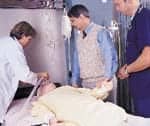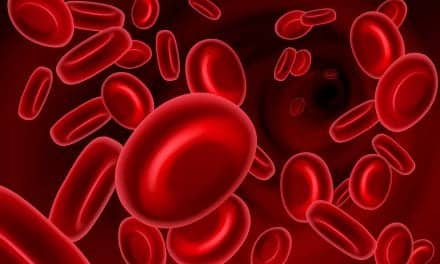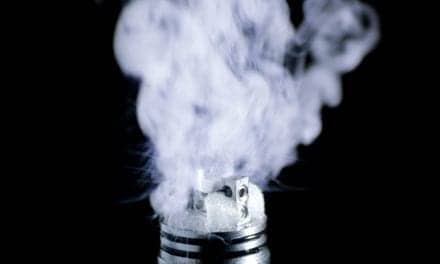Noninvasive ventilation methods for respiratory distress syndrome have gained attention in recent years due to rising incidence of bronchopulmonary dysplasia in intubated infants.
By Lisa Spear
When a baby is born premature, the lungs are often not fully developed. The air sacs, alveoli, that expand and contract like tiny balloons in normal human lungs might not have even formed yet.
If alveoli are present, what little has formed could collapse due to a deficit of pulmonary surfactant. A foamy substance, surfactant works like dish detergent to break up the surface tension of the water molecules inside the lungs, allowing the lungs to inflate more easily. A lack of surfactant is the defining feature of respiratory distress syndrome (RDS), a condition that will affect nearly all pre-term babies born before 28 weeks of pregnancy.1
“It is called respiratory distress syndrome, but what it means is that you just don’t have enough surfactant, either due to you being premature or you don’t create the protein due to a genetic problem,” said Brain Lee, MD, a neonatology fellow at UCLA David Geffen School of Medicine.
Respiratory Distress Syndrome
In some rare cases, a full-term baby might exhibit signs of RDS. For instance, if they pass a stool in the womb, known as a meconium. If any part of the meconium is inhaled, the surfactant in otherwise healthy lungs can become inhibited.
Surfactant normally covers the inner lining of alveoli. Without it, the lungs can fail to inflate, and neonates may show signs of distress within moments of leaving the birth canal. Breathing is more labor intensive and the terminal bronchioles are less expandable.
Unable to take in enough oxygen to support their organs, these newborns typically require some form of ventilation. Without it, they could face damage to the brain and other organs. If not treated with quick precision, harm could lead to life-long disability or mortality. But even with swift interventions, including mechanical ventilation, risks remains.
“Because their lungs do not expand well, you need a lot more pressure to ventilate and oxygenate these babies,” said Lee. That extra pressure, he explains, can take a toll on the fragile babies’ anatomy, especially since the more premature a baby is, the less their lungs have developed, and the more pressure they require.
Medical providers who care for these children are often stuck in a balancing act between determining when a preterm baby needs mechanical ventilation, for how long, and at what pressure. The high positive pressure that is needed to save their lives can cause barotrauma and can lead to permanent lung damage, but without it many of them would likely not survive.
“It is an unfortunate tradeoff, because on the one hand, we need to ventilate these babies, but on the other hand, we know that the positive pressure itself can cause injury to the lungs,” said Lee.
And too little pressure can lead to atelectasis, a partial or full collapse of the lungs. Overall, Lee said, it is very difficult to properly ventilate a baby without causing damage to the respiratory system, including chronic lung disease, but there are precautions that may reduce harm, including noninvasive ventilation modalities.
Noninvasive Ventilation for Respiratory Distress Syndrome
Noninvasive ventilation methods for RDS have gained attention in recent years due to rising incidence of bronchopulmonary dysplasia (BPD), a form of chronic lung disease that can impact newborns with the use of mechanical ventilation. Despite increasing the survival of preterm infants, invasive mechanical ventilation for the treatment of RDS has also led higher rates of BPD in these patients.2
Lee said that an alternative to invasive mechanical ventilation is to first start with surfactant therapy, which is surfactant that is extracted from animals and administered directly to the baby’s lungs. Then, the baby might only need noninvasive ventilation from a nasal cannula or a continuous positive airway pressure (CPAP) machine.
“If you give them surfactant, then hopefully their alveoli will stay open and expand more easily, and if they do so, then you might not need to do mechanical ventilation,” said Lee.
There are a number of noninvasive ventilation modalities that can be deployed. Nasal intermittent positive pressure ventilation (NIPPV) has shown considerable benefits, and may even compete with the benefits of nasal continuous positive airway pressure (CPAP), most widely used noninvasive ventilation mode in neonatal intensive care units.3-4
In some cases, NIPPV might be a preferred modality. For instance, one meta-analysis of 10 trials, with 1061 preterm infants requiring respiratory support for RDS, showed that NIPPV was more efficient than nasal CPAP for the prevention of respiratory failure and for reducing need for intubation.5
Early use of NIPPV instead of NCPAP for preterm RDS patients showed a decreased need for mechanical ventilation by 72 hours after birth and by 7 days of age.6-7
Research has also shown that NIPPV can reduce the need to intubate, with a slight decrease in BPD incidence and increase in extubation success.8
Lee also recommends CPAP as a leading alternative. Multiple nasal CPAP delivery methods are available, including ventilator derived positive airway pressure, as well as the use of a bubble continuous positive airway pressure machine.
Research also backs up the use of CPAP for RDS patients. One randomized study showed that infants who received CPAP fared as well as infants who received mechanical ventilation along with prophylactic surfactant therapy.9
Additionally, those who received early CPAP had a lower need for surfactant therapy. And, overall, the rate of BPD decreased with CPAP use.10
“In most institutions, noninvasive modalities are preferable over invasive ventilation as they lower the risk of mortality, and bronchopulmonary dysplasia in contrast to invasive ventilation,” according to a paper Lee recently coauthored. “We try our best to not intubate a baby if we think they might be able to get away with noninvasive mechanical ventilation.”
RT
Lisa Spear is associate editor of RT. For more information, contact [email protected].
References
- https://www.nhlbi.nih.gov/health-topics/respiratory-distress-syndrome
- Cummings JJ, et al. Noninvasive respiratory support. Pediatrics. 2016;137.
- Permall DL, et al. Current insights in noninvasive ventilation for the treatment of neonatal respiratory disease. Ital J Pediatr. 2019. 45, 105.
- Chen C-Y, et al. Quality improvement of nasal continuous positive airway pressure therapy in neonatal intensive care unit. Pediatr Neonatol. 2017;58(3):229–35.
- Lemyre B, et al. Early nasal intermittent positive pressure ventilation (NIPPV) versus early nasal continuous positive airway pressure (NCPAP) for preterm infants. Cochrane Database Syst Rev. 2016;12.
- Sunil S, et al. Early nasal intermittent positive pressure ventilation versus continuous positive airway pressure for respiratory distress syndrome. Acta Paediatr. 2009;98(9):1412–5.
- Meneses J, et al. Nasal intermittent positive-pressure ventilation vs nasal continuous positive airway pressure for preterm infants with respiratory distress syndrome: a systematic review and meta-analysis. Arch Pediatr Adolesc Med. 2012;166(4):372–6.
- Yuan S, et al. A prospective, randomized, controlled study of NIPPV versus nCPAP in preterm and term infants with respiratory distress syndrome. Pediatr Pulmonol. 2014;49(7):673–8.
- Finer NN, et al. Early CPAP versus surfactant in extremely preterm infants. N Engl J Med. 2010 May 27;362(21):1970-9.
- Committee on Fetus and Newborn; American Academy of Pediatrics. Respiratory support in preterm infants at birth. Pediatrics. 2014 Jan;133(1):171-4.










